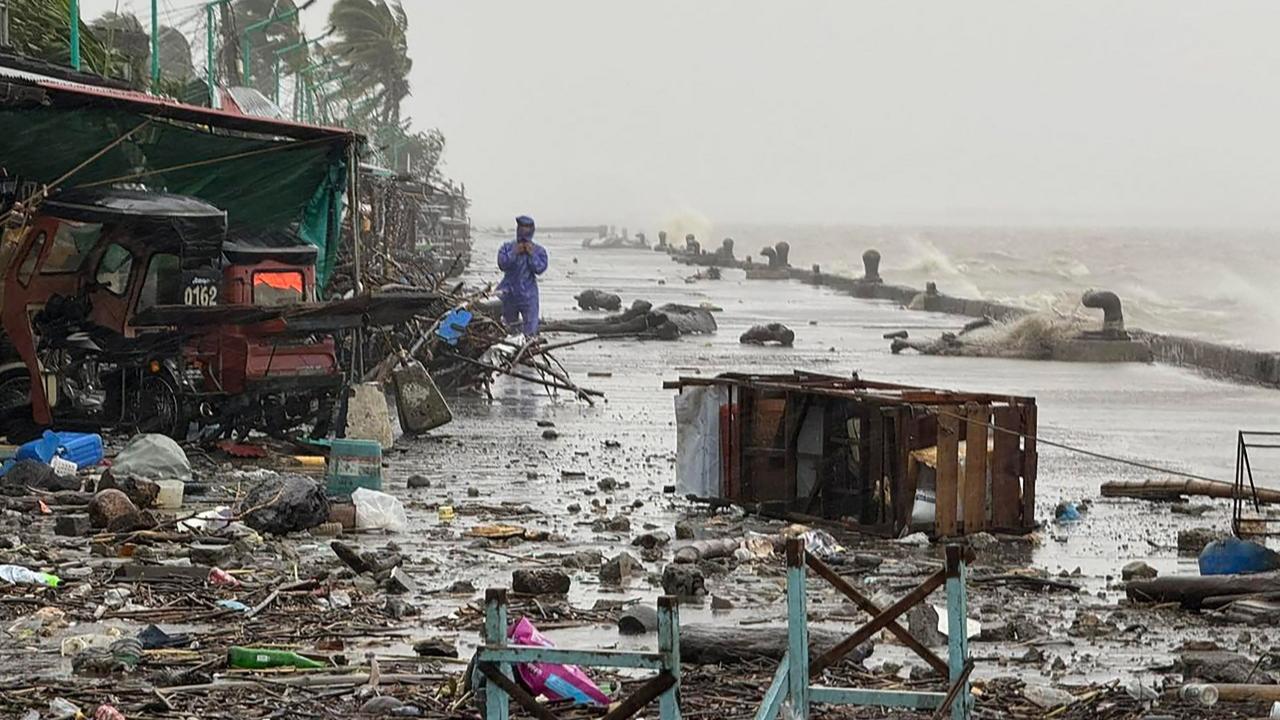Top Stories
China Prepares for Super Typhoon Ragasa, Cancels Flights and Classes

Severe weather preparations are underway in southern China as authorities brace for the impact of Super Typhoon Ragasa, one of the strongest storms to hit the region in recent years. The typhoon has already caused significant damage in the Philippines, resulting in at least three fatalities and displacing over 17,500 residents due to flooding and landslides. As a precaution, schools, businesses, and flights have been suspended across various cities in southern China.
Typhoon’s Path and Impact on Daily Life
According to the Hong Kong Observatory, Super Typhoon Ragasa is packing maximum sustained winds of approximately 230 km/h. The storm is projected to move west-northwest at about 22 km/h across the northern part of the South China Sea, approaching the coast of Guangdong Province. The National Meteorological Centre of China has forecasted that Ragasa will make landfall in the coastal area between Shenzhen and Xuwen County on March 15, 2024.
In anticipation of the storm’s arrival, Hong Kong’s observatory issued a strong wind signal and plans to upgrade its warning to storm signal No. 8, the third-highest level in the city’s weather alert system. This classification indicates a tropical cyclone with winds of 185 km/h or higher, prompting residents to take precautions.
Residents in low-lying areas have already begun to fortify their homes, using sandbags and barriers to protect against flooding. Many have stockpiled essential supplies, as market vendors report a surge in demand for food and other necessities.
Flight Cancellations and School Closures
As the storm approaches, hundreds of flights have been cancelled in Hong Kong, with Shenzhen Airport halting all operations from Tuesday night. The Macao government has activated its emergency response mechanism, expecting Ragasa to pass within 100 kilometers south of the city.
Schools throughout Hong Kong and Macao have closed their doors, while cities such as Shenzhen and Foshan have also suspended classes and gradually halted business operations and public transportation. The government has warned that water levels in coastal areas could rise by up to 2 meters, with some locations potentially experiencing levels up to 5 meters above typical sea levels.
In addition to the destruction in the Philippines, where Typhoon Ragasa has already led to injuries and widespread power outages affecting over 8,000 households, the storm’s impact is felt across the region. The Central News Agency reported that at least six people were injured and thousands evacuated in Taiwan as the typhoon swept south of the island.
The typhoon’s path has led to school and government office closures in the densely populated capital region of the Philippines and 29 northern provinces. Fishing boats and ferries have been prohibited from venturing into dangerous seas, and domestic flights have also been cancelled.
As the situation develops, authorities in southern China remain vigilant, prioritizing public safety and preparedness in the face of one of the most formidable storms in recent history.
-

 World5 months ago
World5 months agoSBI Announces QIP Floor Price at ₹811.05 Per Share
-

 Lifestyle5 months ago
Lifestyle5 months agoCept Unveils ₹3.1 Crore Urban Mobility Plan for Sustainable Growth
-

 Science4 months ago
Science4 months agoNew Blood Group Discovered in South Indian Woman at Rotary Centre
-

 World5 months ago
World5 months agoTorrential Rains Cause Flash Flooding in New York and New Jersey
-

 Top Stories5 months ago
Top Stories5 months agoKonkani Cultural Organisation to Host Pearl Jubilee in Abu Dhabi
-

 Sports4 months ago
Sports4 months agoBroad Advocates for Bowling Change Ahead of Final Test Against India
-

 Science5 months ago
Science5 months agoNothing Headphone 1 Review: A Bold Contender in Audio Design
-

 Top Stories5 months ago
Top Stories5 months agoAir India Crash Investigation Highlights Boeing Fuel Switch Concerns
-

 Business5 months ago
Business5 months agoIndian Stock Market Rebounds: Sensex and Nifty Rise After Four-Day Decline
-

 Sports4 months ago
Sports4 months agoCristian Totti Retires at 19: Pressure of Fame Takes Toll
-

 Politics5 months ago
Politics5 months agoAbandoned Doberman Finds New Home After Journey to Prague
-

 Top Stories5 months ago
Top Stories5 months agoPatna Bank Manager Abhishek Varun Found Dead in Well









